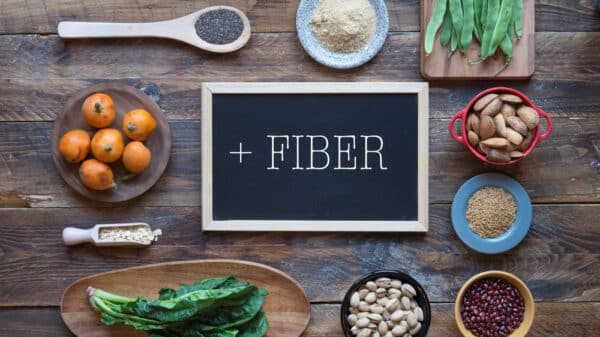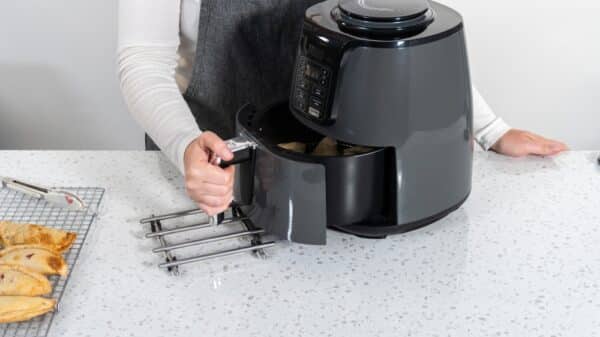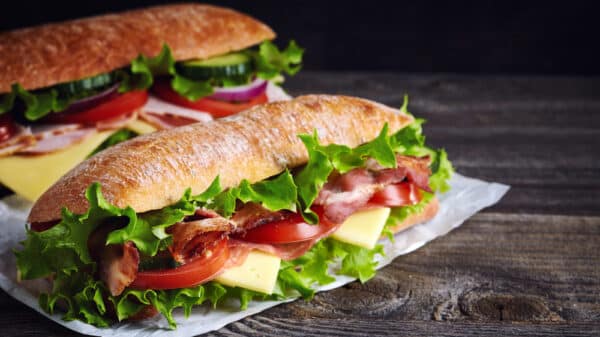If you’ve strolled down the grocery store aisles lately, you’re likely feeling that pinch in your wallet as food prices climb. According to data from the U.S. Bureau of Labor and Statistics, grocery prices have risen by a noticeable 2.4% in just the past year. If this surge in prices has you rethinking your grocery budget, take heart. You don’t need to eliminate everything you love from your shopping list to save money. In fact, there are straightforward, small adjustments you can make that can lead to significant savings over time without sacrificing the meals you enjoy.
Let’s explore some practical grocery store swaps that could help you lower your overall food expenses. While the prices and availability of specific products may vary from one location to another, trying out these tips can help you discover substantial savings—and who knows? You might even stumble upon some new favorite recipes along the way!
One of the first swaps to consider is making baked goods from scratch instead of reaching for those convenient boxed mixes. Sure, those mixes are a real time-saver, especially when you’re in a rush to whip up breakfast or a dessert for a special occasion. But did you know you can create your own mixes at home using simple pantry staples you probably already have? For example, instead of grabbing pancake mix, you can mix flour, baking powder, sugar, and a pinch of salt to create your own homemade pancake mix. To make it even easier, you can prepare and store the dry ingredients in a glass jar, tagging it with a note on how much milk, eggs, or butter to add when you’re ready to make them.
The same principle applies to brownies and cookies. With common ingredients like flour, sugar, baking soda, and a few perishables, you can bake up a storm—often at a fraction of the cost of buying pre-made options. Plus, making these treats from scratch not only saves money, but also puts you in control of the ingredients. This is especially advantageous for those with dietary restrictions or specific eating habits, like gluten-free or vegan diets.
Next, let’s talk about buying in bulk versus those smaller, individual packages. Big-box stores like Costco and Sam’s Club have their fans for a reason. Buying in bulk often saves you money and reduces how often you need to restock your shelves. However, if the thought of impulse buys (like tempting TVs or playground equipment) makes you hesitant about shopping at these stores, don’t forget that your local grocery store may have its own bulk section. More and more stores are reviving their self-serve bulk aisles, where you can scoop up shelf-stable favorites like pasta, beans, nuts, and dried fruit. You can bring your own containers to fill up just what you need, which is not only budget-friendly but also a great eco-conscious choice that cuts down on unnecessary packaging.
When you choose to buy in bulk, you’re not just stockpiling; you’re also making a smart move to reduce food waste. You can select the exact quantity you want, avoiding the purchasing pitfalls that sometimes happen with larger packaged items. Just keep an eye on the pricing—every now and then, bulk items can be pricier than their packaged counterparts. A little research can help you make the most informed choices.
Another fantastic swap is to consider frozen fruits and vegetables instead of fresh produce. We’ve all been there: you excitedly buy fresh fruit or vegetables, only to watch them spoil before you can enjoy them. This not only feels wasteful but can also hit your budget hard. By opting for frozen options, you can save money and reduce food waste. Frozen produce is often picked when it’s at its peak ripeness, so you’re not sacrificing quality. Plus, when you want a taste of summer fruits in the middle of winter, frozen options are often much cheaper than out-of-season fresh fruit.
By integrating these small, manageable changes into your grocery shopping routine, you can see a notable dip in your overall spending while still enjoying the foods you love. With a little experimentation and an open mind, you might just find new cooking techniques—and savings—that work wonderfully for you and your family. So, the next time you hit those grocery aisles, keep these swaps in mind, and watch as your savings add up, meal by meal.season or when you’re whipping up a comforting stew. However, if you want to save some bucks without sacrificing flavor, consider swapping out boxed broth for bouillon cubes or granules. These little flavor bombs are incredibly concentrated and can last a lot longer in your pantry. What’s more, they’re often significantly cheaper per serving than their boxed counterparts.
Using bouillon gives you the flexibility to mix and match flavors based on what you’re cooking. Need chicken broth for your soup? Just dissolve a cube in hot water and voilà! You’re ready to go. Plus, this method puts you in the driver’s seat regarding salt and seasoning—if you want them heartier, just adjust how much you use. It’s a great way to manage flavors and get exactly what you want in your dishes.
When you think about it, the savings from using bouillon over boxed broth can really start to add up, especially if you’re someone who frequently cooks meals that call for broth. Not only will you cut down on costs, but you’ll also have the convenience of ready-to-use flavor enhancers at your fingertips—just grab a cube or a spoonful when needed!
Moreover, if you ever find yourself in a bind, bouillon can also work wonders for flavoring rice or quinoa. Instead of boiling them in plain water, use bouillon to transform your grains into a flavorful side dish in no time.
Ultimately, these small changes—like opting for frozen fruits, dried beans, affordable proteins, oats, and bouillon—can add up to significant savings on your grocery bill. Embracing these alternatives allows you not only to watch your spending but also to keep enjoying nutritious, delicious meals that fit into your lifestyle.
So, the next time you’re at the grocery store, remember that there are smarter, budget-friendly options waiting to be discovered. It’s all about making those simple switches that can help you stretch your dollar and still put great food on the table!
As the seasons change and the chill settles in, there’s something undeniably comforting about warming yourself up with a delicious bowl of soup. Yet, broth isn’t just for soups; it plays a crucial role in a myriad of dishes—from pasta to sauces. While it may be tempting to whip up a homemade batch from scratch, reality often throws time constraints our way, leading many of us to reach for those convenient boxes or cans of broth. However, how often do you buy a box only to find part of it left sitting in the fridge, destined to go to waste? Instead of getting caught in that cycle, consider switching to bouillon.
Bouillon may seem unassuming at first, yet it’s like the kitchen superhero you didn’t know you needed. Available in various flavors like chicken, vegetable, beef, and even seafood, it transforms the way you approach broth-making. Just take a teaspoon of bouillon and add boiling water to create a cup of rich broth ready to enhance your recipe. The magic lies in how concentrated bouillon is; a little bit goes a long way. Imagine having a single jar that can yield multiple cups of broth rather than a box that may only serve a portion of your dish.
Not to mention, there’s a delightful flexibility with bouillon—unlike store-bought broth, which is already pre-mixed and set in its flavor profile, you get to control how intense the flavors are in your cooking. One of the favorites amongst savvy shoppers is “Better than Bouillon,” which many find at Costco. This not only offers savings but also allows you to customize your cooking experience, adapting it to your palate while ensuring that every dish is packed with flavor and your kitchen is stocked effectively without clutter.
Now, let’s chat about snacking. Whether you live alone or have kids running around, snacks are usually a staple on your grocery list. But have you ever taken a moment to consider how much of your budget goes towards those individually packaged snacks, like veggie straws or popcorn bags? We know they’re convenient, but making snacks at home could save you both time and money while giving you a chance to get a bit creative.
Picture this: instead of buying bags of popcorn, why not grab a bag of kernels in bulk? Popping them on the stovetop or in a popcorn maker not only costs significantly less, but it also allows you to customize with your favorite seasonings. Plus, by making your own snacks, you dodge the extra unhealthy additives that tend to crop up in store-bought options. Who doesn’t want to savor popcorn that actually tastes like popcorn?
Don’t stop there—think about stocking up on nuts and dried fruits, too! Though the initial investment might feel hefty, making your own trail mix can lead to serious savings down the line. Pre-packaging your creations into smaller servings can be a money-saver that stretches your groceries further. You can even store leftover nuts in your fridge or freezer, which extends their freshness. And let’s be eco-conscious while we’re at it! Reusable snack bags are a fantastic option that cut down on single-use plastics.
When it comes to how you shop, embracing generic brands over well-known brands can be another game-changer. Often, we’re drawn to a particular label simply because of its name recognition, but many grocery stores offer generic brands that are strikingly similar in quality but come with a pleasantly lower price tag. The savings can be substantial—think anywhere from 25% to 30% cheaper than the brand name. It’s not uncommon for generic items to be produced by the same companies that create the name brands; they’re just featured in more basic packaging.
And don’t fall into the trap of believing that these generic brands are less nutritious. Many grocery chains are stepping up their game, offering specialty brands that focus on healthier, high-quality options like Kroger’s Private Selection or Simple Truth. By exploring your local grocery store, you might just discover gems that align with your health goals without bursting your budget.
Lastly, if you find yourself succumbing to impulse buys while grocery shopping, consider the route of online shopping. It may sound odd for items like fresh produce, but think about this: shopping from home saves you from that tempting candy aisle and all those spontaneous purchases. You can take your time, carefully curating your list without the distractions of an in-store environment. Plus, if you accidentally ordered something you didn’t need—no worries! Many stores let you adjust your online carts before they ship or prepare your order for pickup. This way, you’re not just shopping but also meal prepping effectively.
The transition may take a little getting used to at first, but once you streamline your grocery routines, you’ll likely find you save time while creating a more organized pantry. Over time, you can build up a personalized shopping list based on previous purchases, making your grocery trips smoother and more efficient. So why not try these tips today? You’ll be amazed at how small changes can make a significant impact on your cooking, snacking, and budgeting strategies.
Image Source: voronaman / Shutterstock































